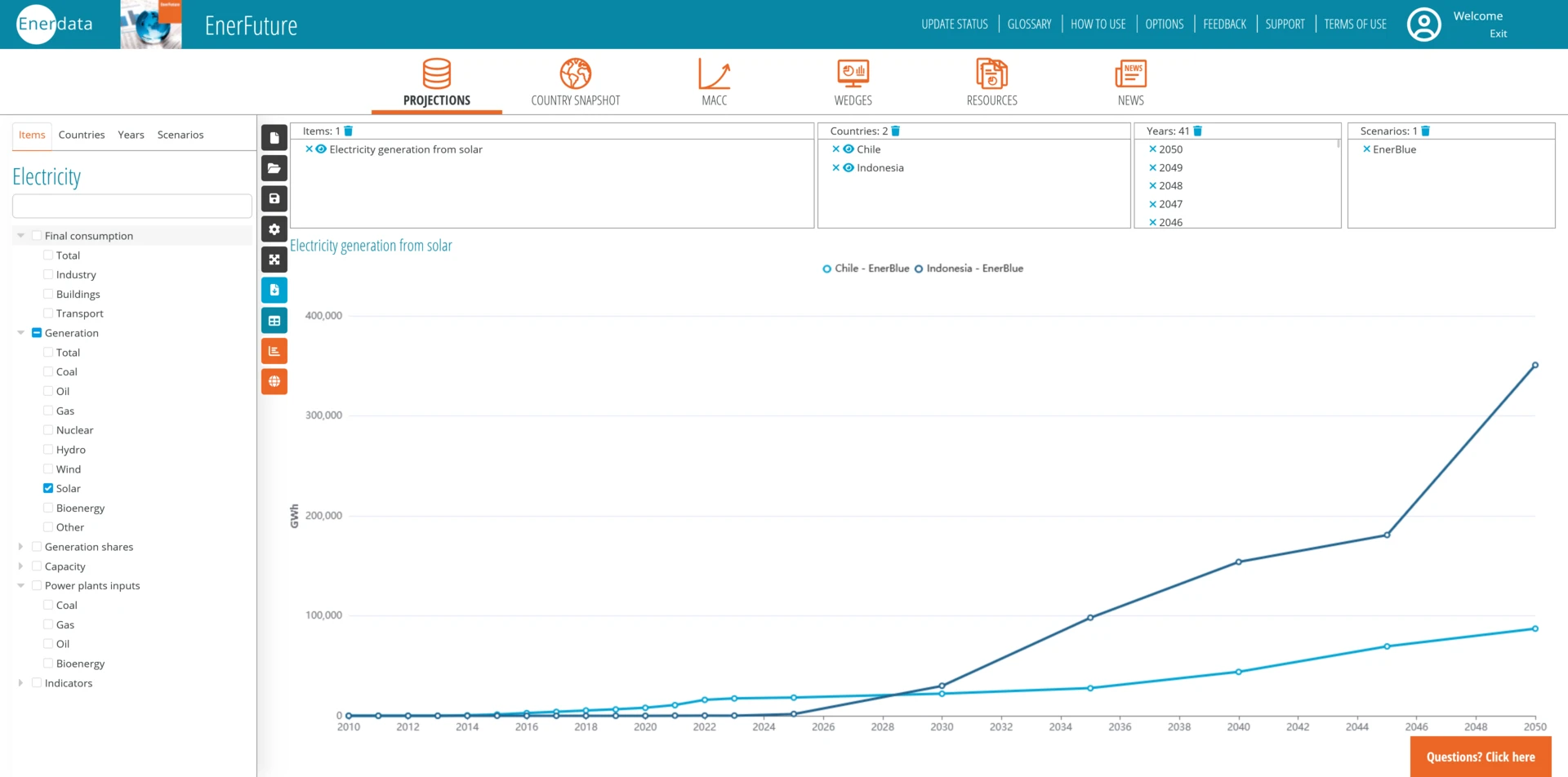More projections
The series contained in this interface are a short excerpt of the data available in Enerdata‘s EnerFuture service. The complete service provides:
- Many other series including end-user prices, electricity generation and capacities by energy source, etc.
- Extended global coverage including 65+ individual countries and regional aggregates.
- Additional scenarios: whereas the data in EnerOutlook corresponds to the EnerBlue scenario (NDC achievement), two other scenarios are provided in EnerFuture: EnerBase (current policies) and EnerGreen (2°C scenario).
- Detailed breakdown: insightful details are provided in EnerFuture, such as a complete disaggregation of all series by country, by sector and by energy source/vector; e.g. final consumption of gas in the US buildings sector, electricity price in the Chinese industry, solar capacity for power generation in India, CO2 emissions from the industry in Europe and by Member State, etc.
- Full MS-Excel export capability: EnerFuture allows the user to select customised sets of forecasts and export the selection into user-friendly MS-Excel sheets (sorted by series or by country), to facilitate further analysis.
- Further analytical indicators: including macroeconomic indicators (economic growth, population, GDP per capita), demand indicators (primary energy intensity, per capita energy and electricity consumption), CO2 indicators (emissions per inhabitant, CO2 intensity of power generation, carbon price, CO2 intensity to GDP), renewables indicators (share in primary and final consumption, share in electricity generation), and more
- Granular Energy Demand Forecast: provide more detailed energy balances, demand indicators and activity drivers for 8 European countries and the EU aggregate, including equipment rates, energy mixes by end use, kilometers travelled.
- Marginal Abatement Cost curves (MACCs): providing both the level of emissions and the level of mitigated/reduced emissions that can be reached at a selected carbon price in a given year, country and sector. These levels are derived from our explicitly detailed standard scenarios. MACCs are provided for a wide range of carbon prices.
- A “Wedges” module: show a breakdown of the levers enabling to reduce emissions between two scenarios
- A Country Snapshot: select your countries of interest and explore the key trends of the future energy system through intuitive graphs and tables.
EnerFuture previews


EnerFuture provides energy projections up to 2050. Our service offers clear insight into the future of energy demand, prices and GHG emissions.
More informationEnerdata's long-term MACC allow you to gain unique insight and comprehensive data from the globally recognised POLES model.
More information


